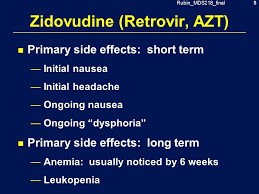A client is admitted to the surgical intensive care unit following the removal of a large portion of the intestines due to a gunshot wound to the abdomen. The client begins to display signs of septic shock and a sepsis protocol is initiated. Which intervention is most important for the nurse to include in the plan of care?
Maintain strict intake and output.
Assess warmth of extremities.
Keep head of bed raised 45 degrees.
Monitor blood glucose level.
The Correct Answer is A
Septic shock is a life-threatening condition characterized by a severe infection that leads to systemic inflammation, organ dysfunction, and low blood pressure. Maintaining strict intake and output monitoring is essential to assess the client's fluid balance and response to interventions. It allows the nurse to closely monitor the client's urine output, which is a crucial indicator of renal perfusion and overall organ function.
Monitoring urine output helps the nurse assess the adequacy of tissue perfusion and the client's response to fluid resuscitation. A decrease in urine output can be an early sign of worsening organ dysfunction and a need for further interventions.
While assessing the warmth of extremities is important for evaluating peripheral perfusion, maintaining strict intake and output monitoring takes priority as it provides more comprehensive information about the client's overall fluid status.
Raising the head of the bed 45 degrees (semi-Fowler's position) can help optimize respiratory function and reduce the risk of aspiration, but it is not the most important intervention in this case.
Monitoring blood glucose levels is important, as hyperglycemia can be associated with sepsis. However, in the context of septic shock, maintaining strict intake and output monitoring takes precedence as it directly assesses the client's fluid balance and response to interventions.
It's crucial to note that the management of septic shock requires a multidisciplinary approach, and other interventions, such as administering appropriate antibiotics, initiating fluid resuscitation, and addressing the underlying source of infection, should also be implemented in a timely manner.
Nursing Test Bank
Naxlex Comprehensive Predictor Exams
Related Questions
Correct Answer is A
Explanation
A) Correct- Zidovudine is an antiretroviral medication used in the treatment of HIV infection.
One of the potential side effects of zidovudine is hematological toxicity, including anemia (low red blood cell count) and neutropenia (low white blood cell count). The appearance of pinpoint, red, round spots on the skin could be indicative of petechiae, which are small hemorrhages caused by the leakage of blood into the skin. Petechiae can occur due to low platelet counts, a
component of the complete blood count (CBC). Monitoring the complete blood count is important for clients receiving zidovudine to identify any potential adverse effects on blood cell counts. Anemia and neutropenia can increase the risk of infection, bleeding, and other complications. Therefore, any changes in blood cell counts, including the presence of petechiae, should be reported to the healthcare provider for further evaluation and management.
B) Incorrect- This is used to assess allergic reactions and is not specifically related to the appearance of petechiae.
C) Incorrect- A skin biopsy is typically performed to diagnose skin conditions or diseases and is not the primary assessment to evaluate the cause of petechiae.
D) Incorrect- Electromyography is a diagnostic test used to assess muscle and nerve function and is not relevant to the appearance of petechiae associated with zidovudine use.

Correct Answer is A
Explanation
Assessing and managing pain is a crucial aspect of providing atraumatic care for any post-operative patient, including a child with spastic cerebral palsy. It is important to monitor and assess the child's pain levels regularly to ensure their comfort and
well-being. Pain can be particularly challenging to assess in a child with cognitive and speech delays, so the nurse should use appropriate pain assessment tools and also consider nonverbal cues, changes in behavior, and physiological indicators of pain.
While antibiotics may be prescribed if there is an infection present, it is not mentioned as a priority in this specific scenario. The focus is on providing atraumatic care post-operatively.
Occupational therapy, physical therapy, and wound care are all important components of the child's overall care, but they may not be the immediate priority post-operatively. The child's specific needs and surgical procedure will determine when these interventions are appropriate and can be incorporated into the plan of care as needed. However, addressing pain is of utmost importance in the immediate post-operative period.
Whether you are a student looking to ace your exams or a practicing nurse seeking to enhance your expertise , our nursing education contents will empower you with the confidence and competence to make a difference in the lives of patients and become a respected leader in the healthcare field.
Visit Naxlex, invest in your future and unlock endless possibilities with our unparalleled nursing education contents today
Report Wrong Answer on the Current Question
Do you disagree with the answer? If yes, what is your expected answer? Explain.
Kindly be descriptive with the issue you are facing.
